 W
WThe Order of National Artists of the Philippines is an order bestowed by the Philippines on Filipinos who have made significant contributions to the development of Philippine art. Members of the Order are known as National Artists. Originally instituted as an award, it was elevated to the status of an order in 2003.
 W
WThe 2009 National Artist of the Philippines controversy refers to the controversial proclamation as National Artists of the Philippines of four individuals via the Presidential prerogative of Gloria Macapagal Arroyo, when the four had not been nominated by the selection committee, composed of representatives from National Commission for Culture and the Arts (NCCA) and the Cultural Center of the Philippines (CCP).
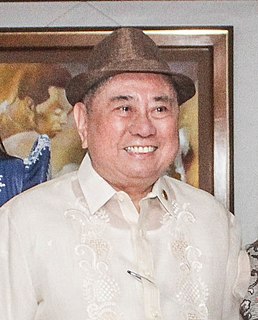 W
WVirgilio Senadrin Almario, better known by his pen name Rio Alma, is a Filipino artist, author, poet, critic, translator, editor, teacher, and cultural manager. He is a National Artist of the Philippines and currently serves as the chairman of the Komisyon sa Wikang Filipino (KWF), the government agency mandated to promote and standardize the use of the Filipino language. On January 5, 2017, Almario was also elected as the chairman of the National Commission for Culture and the Arts (NCCA).
 W
WFernando Amorsolo y Cueto was one of the most important artists in the history of painting in the Philippines. Amorsolo was a portraitist and painter of rural Philippine landscapes. He is popularly known for his craftsmanship and mastery in the use of light.
 W
WPablo Sebero Antonio, Sr. was a Filipino architect. A pioneer of modern Philippine architecture, he was recognized in some quarters as the foremost Filipino modernist architect of his time. The rank and title of National Artist of the Philippines was conferred on him by President Ferdinand Marcos in 1976.
 W
WDaisy Avellana was a Filipino stage actress and theater director. Avellana was honored as a National Artist of the Philippines for Theater and Film in 1999.
 W
WLamberto Vera Avellana was a prominent Filipino film and stage director. Despite considerable budgetary limitations that hampered the post-war Filipino film industry, Avellana's films such as Anak Dalita and Badjao attained international acclaim. In 1976, Avellana was named by President Ferdinand Marcos as the first National Artist of the Philippines for Film. While Avellana remains an important figure in Filipino cinema, his reputation as a film director has since been eclipsed by the next wave of Filipino film directors who emerged in the 1970s, such as Lino Brocka and Ishmael Bernal.
 W
WCirilo F. Bautista was a Filipino poet, critic and writer of nonfiction. A National Artist of the Philippines award was conferred on him in 2014.
 W
WCatalino Ortiz Brocka was a Filipino film director. He is widely regarded as one of the most influential and significant filmmakers in the history of Philippine cinema. He co-founded the organization Concerned Artists of the Philippines (CAP), dedicated to helping artists address issues confronting the country, and the Free the Artist Movement. He was a member of the Coalition for the Restoration of Democracy.
 W
WBenedicto Reyes Cabrera, better known as "BenCab", is a Filipino painter and was awarded National Artist of the Philippines for Visual Arts (Painting) in 2006. He has been noted as "arguably the best-selling painter of his generation of Filipino artists."
 W
WRyan Cayabyab, also known as Mr. C, is a Filipino musician, composer and conductor. He was the Executive and Artistic Director for several years for the defunct San Miguel Foundation for the Performing Arts. He was named as National Artist of the Philippines for Music in 2018.
 W
WLevi Celerio was a Filipino composer and lyricist who is credited with writing over 4,000 songs. Celerio was recognized as a National Artist of The Philippines for Music and Literature in 1997.
 W
WFrancisco V. Coching was a Filipino comic books illustrator and writer and is regarded as one of the “pillars of the Philippine Komiks Industry”. He served as both illustrator and writer for his comic book stories, Coching is referred to as the "King of Komiks", and as the "Dean of Philippine Comics". In 2014, he was posthumously conferred as a National Artist for Visual Arts, the highest honor for artists in the Philippines.
 W
WManuel Conde was a Filipino actor, director and producer. As an actor, he also used the screen name Juan Urbano during the 1930s aside from his more popular screen name.
 W
WVictorio Candido Edades was a Filipino painter. He led the revolutionary Thirteen Moderns, who engaged their classical compatriots in heated debate over the nature and function of art. He was named a National Artist in 1976.
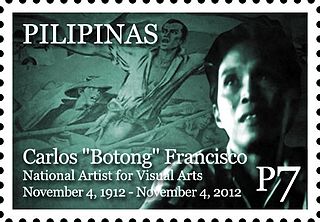 W
WCarlos Modesto "Botong" Villaluz Francisco was a Filipino muralist from Angono, Rizal.
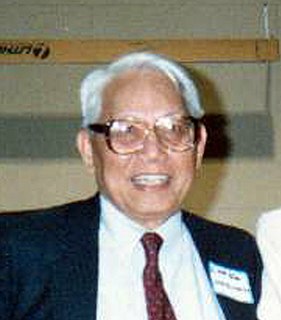 W
WNéstor Vicente Madali González was a Filipino novelist, short story writer, essayist and, poet. Conferred as the National Artist of the Philippines for Literature in 1997.
 W
WWilfrido María Guerrero was a Filipino playwright, director, teacher and theater artist. He wrote over 100 plays, 41 of which have been published. His unpublished plays have either been broadcast over the radio or staged in various parts of the Philippines.
 W
WAmado Vera Hernandez, commonly known as Amado V. Hernandez, was a Filipino writer and labor leader who was known for his criticism of social injustices in the Philippines and was later imprisoned for his involvement in the communist movement. He was the central figure in a landmark legal case that took 13 years to settle.
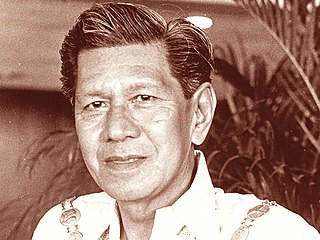 W
WNicomedes "'Nick" ' was a Filipino writer and journalist best known for his short stories and novels in the English language. He also wrote using the pen name Quijano de Manila. Joaquin was conferred the rank and title of National Artist of the Philippines for Literature. He has been considered one of the most important Filipino writers, along with José Rizal and Claro M. Recto. Unlike Rizal and Recto, whose works were written in Spanish, Joaquin's major works were written in English despite being a native Spanish speaker.
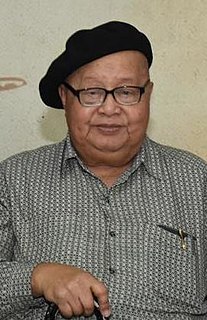 W
WFrancisco Sionil José is one of the most widely read Filipino writers in the English language. His novels and short stories depict the social underpinnings of class struggles and colonialism in Filipino society. José's works—written in English—have been translated into 28 languages, including Korean, Indonesian, Czech, Russian, Latvian, Ukrainian and Dutch.
 W
WLucrecia Roces Kasilag was a Filipino composer and pianist. She is particularly known for incorporating indigenous Filipino instruments into orchestral productions.
 W
WAmelia Lapeña-Bonifacio was a Filipino playwright, puppeteer, and educator known as the "Grande Dame of Southeast Asian Children's Theatre". In 1977, she founded a children's theater troupe, Teatrong Mulat ng Pilipinas, the official theater company and puppetry troupe of the University of the Philippines. Lapeña-Bonifacio served as the President of the International Association of Theatre for Children and Young People-Philippines (ASSITEJ-Philippines) and Union Internationale de la Marionnette-Philippines (UNIMA-Philippines). She was recognized in 2018 as a National Artist of the Philippines for Theater.
 W
WCesar Torrente Legaspi was a Filipino National Artist in painting. He was also an art director prior to going full-time in his visual art practice in the 1960s. His early (1940s–1960s) works, alongside those of peer, Hernando Ocampo are described as depictions of anguish and dehumanization of beggars and laborers in the city. These include Man and Woman and Gadgets. Primarily because of this early period, critics have further cited Legaspi's having "reconstituted" in his paintings "cubism's unfeeling, geometric ordering of figures into a social expressionism rendered by interacting forms filled with rhythmic movement".
 W
WFelipe Padilla de León was a Filipino classical music composer, conductor, and scholar.
 W
WGerardo de León, ONA, was a Filipino film director and actor.
 W
WLeandro V. Locsin was a Filipino architect, artist, and interior designer known for his use of concrete, floating volume and simplistic design in his various projects. An avid collector, he was fond of modern painting and Chinese ceramics. He was prod a National Artist of the Philippines for Architecture in 1990 by the late President Corazon C. Aquino.
 W
WBienvenido Lumbera is a Filipino poet, critic and dramatist. He is a National Artist of the Philippines and a recipient of the Ramon Magsaysay Award for Journalism, Literature and Creative Communications. He won numerous literary awards, including the National Book Awards from the National Book Foundation, and the Carlos Palanca Memorial Awards.
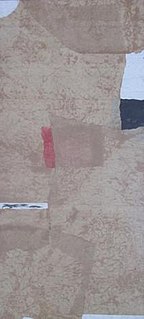 W
WArturo Rogerio Luz was a Filipino visual artist. He was also a known printmaker, sculptor, designer and art administrator.
 W
WJosé Montserrat Maceda was a Filipino composer and ethnomusicologist. He was named a National Artist of the Philippines for Music in 1998.
 W
WVicente Silva Manansala was a Filipino cubist painter and illustrator. He was a member of the prominent Cruz, Manansala, Lopez family clan. He is considered one of the 13 Moderns, a group of modernists associated with Victorio Edades.
 W
WFrancisco "Bobby" Mañosa was a Filipino architect considered one of the most influential Filipino architects of the 20th century for having pioneered the art of Philippine neovernacular architecture. His contributions to the development of Philippine architecture led to his recognition as a National Artist of the Philippines for Architecture in 2018.
 W
WSeverino Montano is considered one of the Titans of Philippine Theater. He was a playwright, director, actor and theater organizer with an output of one novel, 150 poems and 50 plays in his 65-year lifetime. Through the foundation of the Arena Theater, Montano institutionalized “legitimate theater” in the Philippines. He also have lifetime achievement award as part of National Artist of the Philippines.
 W
WLeonor Orosa-Goquingco was a Filipino national artist in creative dance, who was also known for breaking tradition within dance. She played the piano, drew art, designed scenery and costumes, sculpted, acted, directed, danced and choreographed. Her pen name was Cristina Luna and she was known as Trailblazer, Mother of Philippine Theater Dance and Dean of Filipino Performing Arts Critics. She died on July 15, 2005 of cardiac arrest following a cerebro-vascular accident at the age of 87.
 W
WRonald Allan Kelley Poe, known professionally as Fernando Poe Jr., and often referred to by his initials FPJ, was a Filipino actor, film director, producer, screenwriter, and politician. His long and successful career as an action star earned him the nickname "Da King". He also wrote, directed, and produced several of the films he starred in—under the pseudonyms Ronwaldo Reyes and D'Lanor.
 W
WCarlos Lozada Quirino was a Philippine biographer and historian.
 W
WEdgar Sinco Romero,, commonly known as Eddie Romero, was a Filipino film director, film producer and screenwriter.
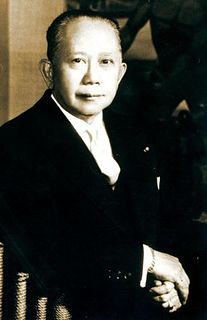 W
WCarlos Peña Romulo was a Filipino diplomat, statesman, soldier, journalist and author. He was a reporter at 16, a newspaper editor by the age of 20, and a publisher at 32. He was a co-founder of the Boy Scouts of the Philippines, a general in the US Army and the Philippine Army, university president, President of the UN General Assembly, was eventually named one of the Philippines' National Artists in Literature, and was the recipient of many other honors and honorary degrees. He was born in Camiling, Tarlac and he studied at the Camiling Central Elementary School during his basic education.
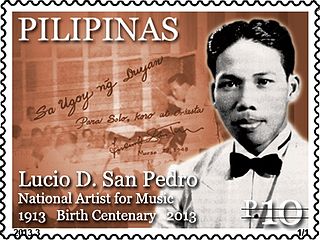 W
WLucio D. San Pedro, Sr. was a Filipino composer and teacher who was proclaimed a National Artist of the Philippines for Music in 1991.
 W
WRamón Pagayon Santos is a Filipino composer, ethnomusicologist, and educator known for being the Philippines' foremost living exponent of contemporary Filipino classical music, for work that expounds on "the aesthetic frameworks of Philippine and Southeast Asian artistic traditions," and for finding new uses of indigenous Philippine instruments.
 W
WEric Oteyza de Guia, better known as Kidlat Tahimik, is a film director, writer and actor whose films are commonly associated with the Third Cinema movement through their critiques of neocolonialism. For his contributions to the development of Philippine independent cinema, he was recognized in 2018 as a National Artist of the Philippines for Film - a conferment which represents the Philippine state's highest recognition for artists.
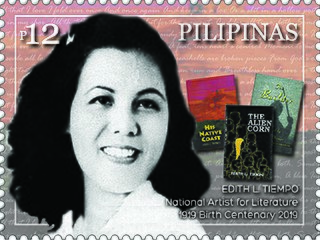 W
WEdith Lopez-Tiempo, poet, fiction writer, teacher and literary critic was a Filipino writer in the English language. She was conferred the National Artist Award for Literature in 1999.
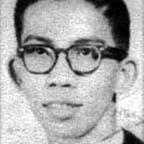 W
WRolando Santos Tinio was a Filipino poet, dramatist, director, actor, critic, essayist and educator.
 W
WRamón Valera was a Filipino fashion designer who was bestowed with the National Artist of the Philippines honor in 2006. He is the first and only Filipino fashion designer to receive this distinction to date. In 2017, his work was displayed in an exhibit called Valera and the Modern: An Exhibit on the Life and Work of National Artist for Fashion Design, Ramon Valera which was curated by Gerry Torres at De La Salle-College of St. Benilde’s School of Design and Arts Gallery.
 W
WJosé García Villa was a Filipino poet, literary critic, short story writer, and painter. He was awarded the National Artist of the Philippines title for literature in 1973, as well as the Guggenheim Fellowship in creative writing by Conrad Aiken. He is known to have introduced the "reversed consonance rhyme scheme" in writing poetry, as well as the extensive use of punctuation marks—especially commas, which made him known as the Comma Poet. He used the pen name Doveglion, based on the characters he derived from his own works. These animals were also explored by another poet, E. E. Cummings, in "Doveglion, Adventures in Value", a poem dedicated to Villa.
 W
WJosé María V. Zaragoza was a Filipino architect.
 W
W